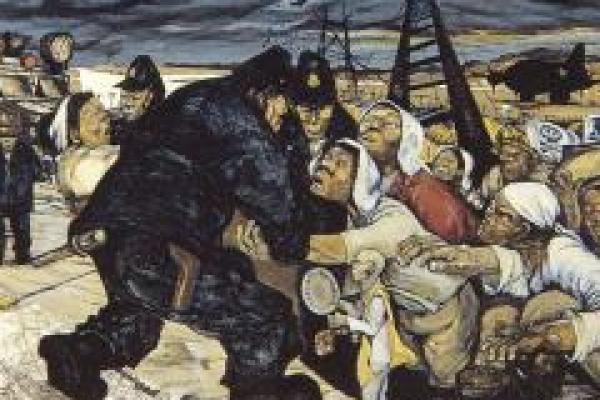
Wed, April 10, 2019
4:00 pm - 6:00 pm
Thompson Library, Room 165 (1858 Neil Ave. Mall)
University Libraries presents:
Namiko Kunimoto
Associate Professor
Department of History of Art
The Ohio State University
"Art and Dissent in Cold War Japan."
Abstract: In the early 1950s, the working man was an idealized symbol for those who sought to legitimize a new democratic, consumer society in Japan, as well as for those who fought to establish a socialist form of government. In this context, the representation of the male body became an implicit battleground in art and visual culture in the Cold War.
An examination of Nakamura's oeuvre shows how he negotiated the shifting political spectrum of the Cold War through a gendered lens that constructed the male body as a site of labor, struggle, and active movement. But his canvases also reveal a deep-seated anxiety about Japanese masculinity. In the late 1950s, the male body was exiled from his canvases in favor of masculinized machinery. From the 1960s onwards, he painted images of schoolgirls that simultaneously critiqued and perpetuated sexist consumption, relying on movement to intrigue viewers and maintain a masculine presence on the canvas.
In conjunction with the current exhibition Creative Responses to the Cold War, this lecture will culminate with a brief tour and Q&A with exhibit co-curator and Japanese Studies Librarian Ann Marie Davis in the Thompson Gallery (Room 125).
Visit the OSUL website for further information.
